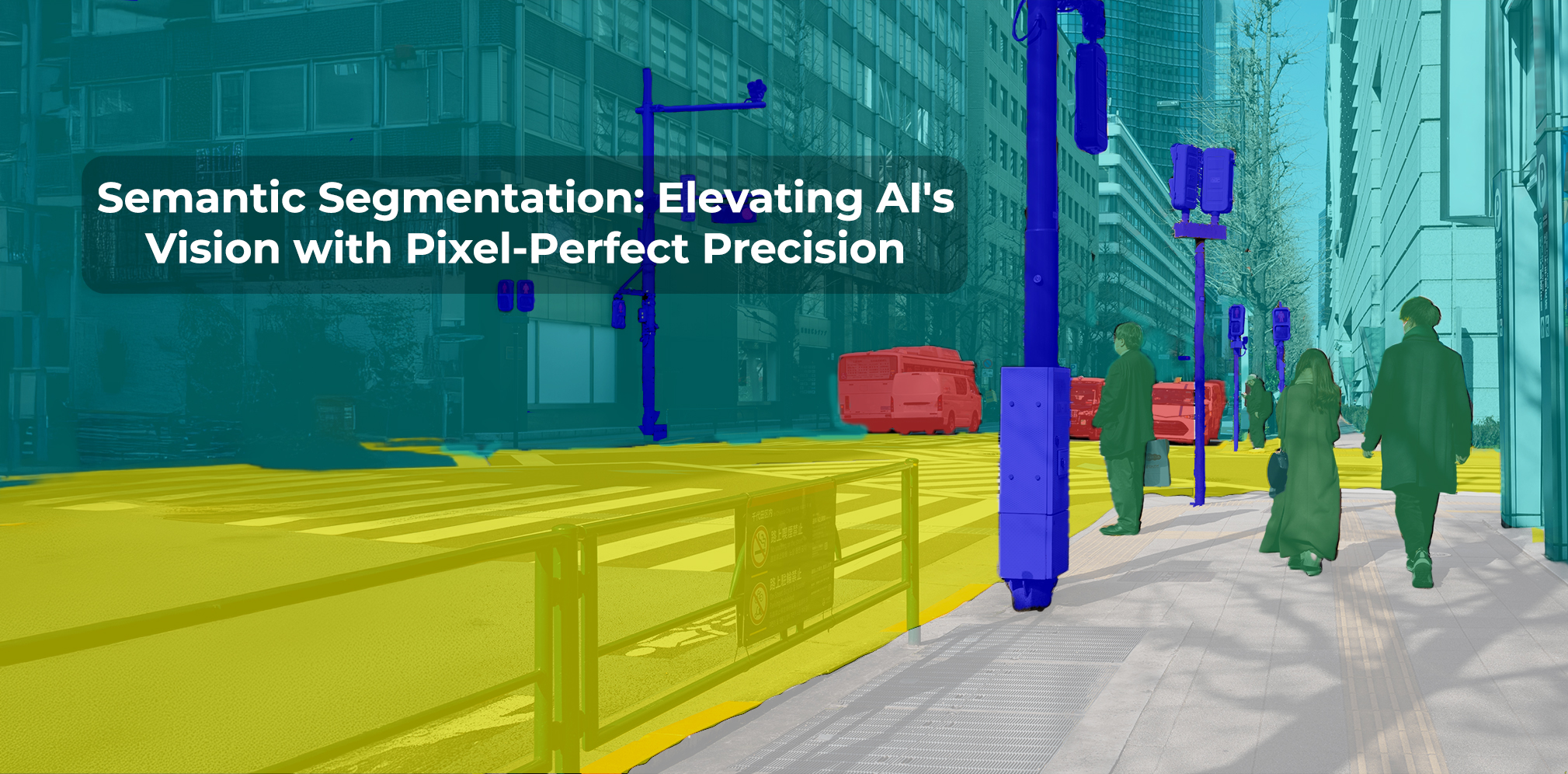In today’s AI-driven world, the ability to perceive and interpret complex visual scenes is no longer a futuristic ambition—it’s a foundational need. Whether it’s autonomous vehicles navigating chaotic city roads or medical systems pinpointing anomalies in scans, the demand for precise, contextual visual understanding is rapidly growing. At the heart of this capability lies a powerful technique: semantic segmentation.
What is Semantic Segmentation?
Semantic segmentation classifies every pixel in an image into a predefined category—transforming raw visual data into structured, meaningful maps. Unlike object detection (which simply draws bounding boxes) or instance segmentation (which distinguishes individual object instances), semantic segmentation provides a pixel-level understanding that’s crucial for machines to perceive fine-grained details and spatial context.
Why it Matters in Real-World Applications
Visual data in real-life settings is messy—objects overlap, lighting shifts, and backgrounds vary unpredictably. These challenges are particularly pressing in fields like autonomous mobility, smart infrastructure, retail automation, precision agriculture, and medical diagnostics.
Semantic segmentation enables AI systems to decode these complexities with accuracy by:
- Clearly demarcating object boundaries
- Distinguishing between background and foreground classes
- Understanding spatial relationships between entities
These “semantic maps” serve as the cognitive bedrock for AI decisions—whether it’s identifying a pedestrian stepping onto the road or segmenting a tumor from an organ in a scan.
Real-World Industry Use Cases Powered by NextWealth
At NextWealth, semantic segmentation is more than a technique—it’s a capability we’ve scaled across multiple industries:
- Autonomous Driving: We power safer roads through detailed annotation of lanes, traffic signs, vehicles, and pedestrians.
- Urban Infrastructure Mapping: Asset-level labelling of curbs, poles, signs, and road markings supports smart city deployments.
- Retail Shelf Intelligence: From planogram compliance to real-time shelf stock analysis, our pixel-accurate labelling drives visual merchandising AI.
- Agri-Tech: High-resolution segmentation of crops, soil, and weeds enhances drone-based agricultural monitoring.
- Healthcare: DICOM image annotation for organ, tissue, and tumor segmentation improves clinical decision support systems.
The Link Between Annotation Quality and AI Performance
High-quality annotation is a non-negotiable for reliable AI performance. Inconsistent or poorly labelled data introduces noise into model training, reducing the accuracy and trustworthiness of AI outputs.
NextWealth’s approach addresses this through:
- Human-in-the-Loop (HITL) methodologies to refine annotation consistency
- SOP-driven processes, peer reviews, and automated checks to enforce standards
- A multi-layered QA framework with transparency through real-time dashboards
This disciplined execution results in models that consistently achieve >98% precision and recall, with reduced error margins and faster inference readiness.
Trends Shaping the Future of Semantic Segmentation
The field of semantic segmentation is undergoing rapid evolution, influenced by new technologies and changing industry demands:
- Real-Time Inference on Edge: As AI models move closer to the edge—into vehicles, drones, and mobile devices—real-time semantic segmentation is becoming critical. Applications require sub-second processing for decision-making under dynamic conditions.
- Synthetic Data Adoption: Collecting real-world data is often costly or infeasible. Gartner predicts synthetic data will surpass real-world data usage by 2030. It offers scalable, controllable scenarios to enrich training datasets, especially in edge cases or rare environments.
- Self-Supervised and Few-Shot Learning: Tech giants like Meta, Google, and NVIDIA are investing in techniques that reduce reliance on extensive labelled datasets. These approaches help models generalize better while significantly lowering annotation overheads.
Why Choose NextWealth as Your Semantic Segmentation Partner?
Domain-Specialized Annotators
NextWealth doesn’t rely on generic labellers. Our talent pool is domain-trained—capable of identifying subtle visual cues across industries. Be it interpreting road conditions in ADAS data or segmenting tissues in radiology scans, our annotators are equipped with deep vertical-specific knowledge.
Customized Annotation Tooling
We integrate bespoke plugins, macros, and tool-specific scripts into standard annotation platforms. This results in faster cycle times and reduced manual effort while preserving accuracy.
Quality-Controlled Workflows
Every annotation passes through a rigorous validation pipeline—automated flagging of anomalies, HITL audits, SOP-based reviews, and versioned records. We provide complete transparency through QA dashboards and SLA-linked performance tracking.
Rapid Scalability
With distributed delivery centres and a robust onboarding playbook, we can ramp operations from pilot to full production within weeks. Our ability to scale 10x quickly—without compromising accuracy—is a differentiator trusted by Fortune 500s.
Final Thoughts
Semantic segmentation isn’t just a technical advancement—it’s the cornerstone for creating AI that truly understands the world it interacts with. From enabling real-time decision-making in autonomous systems to driving surgical precision in diagnostics, the quality and scalability of semantic segmentation determine AI effectiveness.
At NextWealth, we bring the perfect blend of precision, scale, and domain intelligence to your AI pipelines. Whether you’re building a perception model for autonomous driving or analysing drone images for agronomic insights, our HITL-backed semantic segmentation solutions set the gold standard.

